
Dr. Mario is a 1990 puzzle video game developed and published by Nintendo for the Nintendo Entertainment System, Famicom, and Game Boy. It was produced by Gunpei Yokoi and designed by Takahiro Harada. The soundtrack was composed by Hirokazu Tanaka.
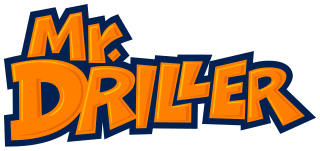
Mr. Driller is a puzzle video game franchise created by Yasuhito Nagaoka and Hideo Yoshizawa for Namco. The eponymous first game was released in 1999 for arcades and several home consoles, such as the PlayStation. Gameplay in the series consists of controlling Susumu Hori, the titular Mr. Driller, or one of his friends and destroying colorful formations of blocks to make it to the bottom of a well. In order to survive, players need to collect air capsules to replenish their depleting oxygen and avoid being crushed by falling blocks.
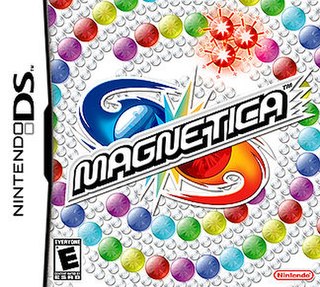
Magnetica is a puzzle video game for the Nintendo DS, released as part of the Touch! Generations series. The game was developed by Mitchell Corporation and published by Nintendo, and is based on Mitchell's 1998 arcade game Puzz Loop.

WarioWare: Smooth Moves is a party video game developed by Nintendo SPD and Intelligent Systems. The game was published by Nintendo for its Wii video game system in Japan in December 2006, and in Europe, North America, and Australia in January 2007. It is the fifth game in the WarioWare series of games, and the only game in the series to be physically released for the Wii. Like its predecessors, WarioWare: Smooth Moves is built around a collection of microgames that last about five seconds each, and which require that the player hold the Wii Remote in specific positions. The game offers the microgames to the player in rapid succession, by first instructing the player to hold the Wii Remote in a specific manner, and then showing them the microgame. The microgames are divided into several stages, each of which loosely connects the microgames with the help of a story. Additionally, this was the first spin-off Mario game to be released for the console.

bit Generations is a video game franchise for the Game Boy Advance, published by Nintendo. It was first announced under the name Digitylish at the Electronic Entertainment Expo (E3) in 2005. Each of the games in the series feature simple controls, gameplay and graphics. All the games were developed by Skip Ltd., except for Digidrive, which was developed by Q-Games.

Dr. Mario Online Rx, stylized as Dr. Mario Online ℞ and released in PAL regions as Dr. Mario & Germ Buster, is a puzzle video game starring Dr. Mario. It was one of the WiiWare launch games in Japan, Europe, and Australia, and was released in 2008 on March 25 for Japan, on May 20 for Europe and Australia, and for North America on May 26.
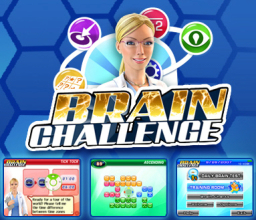
Brain Challenge is a mental exercise video game, featuring "brain exercise puzzles". The game was developed by Gameloft Beijing for mobile phone and iPod and released on September 5, 2007. In 2008 was followed by a Nintendo DS version on January 8, an Xbox Live Arcade release on March 12, and a PlayStation 3 launch on November 27. The N-Gage 2.0 version was released on the day of the service's launch, April 3, 2008. A version for WiiWare was released in autumn 2008 on all three regions. The Wii version also uses Miis for the players profile. OnLive also had launched their new streaming game platform with Brain Challenge on July 27, 2010. The game was released for Mac OS X in January 2011.

Bomberman Blast is an action game developed and published by Hudson Soft for the Wii and WiiWare as part of the Bomberman franchise. The game was released as two versions: a fully featured retail release and a WiiWare version known as Wi-Fi 8-Nin Battle Bomberman. The retail version was released in Japan on September 25, 2008, while the WiiWare version was released on September 30, 2008. The WiiWare version was released in Europe on September 12, 2008, and in North America on September 29, 2008.

Tetris Party is a puzzle video game by Hudson Soft for WiiWare. An installment of the Tetris series, the game supports the use of Miis and the Wii Balance Board, and features both local and online multiplayer in addition to several single-player modes unique to the game.
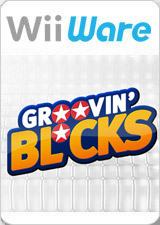
Groovin' Blocks is a puzzle video game for Wii by Empty Clip Studios. It was released in North America on September 8, 2008 as a downloadable WiiWare game. It also released as an expanded retail of the game in North America on August 11, 2009. The game was later released for the iPhone OS platform and on PlayStation Network on March 18, 2010.

Cubello, known in Japan as Cubeleo, was released in North America for WiiWare on October 13, 2008. While it was the third series release, Cubello was the first fully original Art Style series entry, having no bit Generations series counterpart.

Bit.Trip Beat, marketed as BIT.TRIP BEAT, is an arcade-style music video game developed by Gaijin Games and published by Aksys Games for the Wii's WiiWare download service. It was released in 2009 in North America, and released in Japan and PAL regions in the same year. It was later released for the Windows and Mac OS X through the download service Steam in 2010, while Namco Bandai published it for iOS on iPod Touch, iPhone, and iPad in both Bit.Trip Beat and Bit.Trip Beat HD versions. Android and Linux versions debuted in the Humble Android Bundle 3.

Picopict, known as Pictobits in North America and as Pictopict in Australia, is a puzzle video game developed by Skip Ltd. and published by Nintendo for the Nintendo DSi's DSiWare digital distribution service. It is one of seven games released for the DSi's Art Style series of video games. It was announced on January 26, 2009, was released two days later alongside Somnium, another Art Style game, and was released in North America and PAL regions in the same year, on May 18 and May 22 respectively. In Picopict, players use the touchscreen to move coloured blocks into a formation, such as a four-block line or a 2x2 square. This contributes to an 8-bit image, which consist of various Nintendo Entertainment System (NES) characters, such as Mario, Link, and Bowser.

Orbient, known in Japan as Orbital, is a puzzle video game developed by Skip Ltd. and published by Nintendo for the Wii's WiiWare digital distribution service. It is one of twelve games in the Art Style series of video games available for WiiWare and DSiWare. It is a remake of a Japan-only Game Boy Advance video game titled Orbital, released for the bit Generations series of video games.

Mr. Driller W is a 2009 puzzle video game developed and published for the WiiWare service by Namco Bandai Games. The eighth entry in the Mr. Driller series, gameplay revolves around clearing each level by destroying, or "drilling", large formations of colorful blocks. Players have an oxygen meter that acts as a time limit, and constantly depletes; air is replenished by collecting air capsules, and is depleted further by destroying brown "X" blocks.
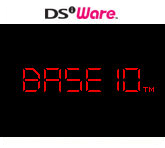
Code, known as Base 10 in North America and Decode in Japan, is a puzzle video game developed by Skip Ltd. and published by Nintendo for the Nintendo DSi's DSiWare digital distribution service.

Boxlife, known as Hacolife in Japan, is a puzzle video game developed by Skip Ltd. and published by Nintendo for the Nintendo DSi's DSiWare digital distribution service.

Dr. Mario Express, known in PAL regions as A Little Bit of... Dr. Mario, is a Mario action puzzle video game published by Nintendo. The game was released as a DSiWare title for the Nintendo DSi platform. Dr. Mario Express was released as a launch title for the DSiWare service in Japan on December 24, 2008, and was released in both North America and PAL regions in 2009. The game was developed by Arika, which had also created Dr. Mario Online Rx for WiiWare.

5 Spots Party is a party video game for WiiWare by Spanish studio Cosmonaut Games. It is a spin-off of the casual PC games 5 Spots and 5 Spots II by KatGames. It was released in Europe on July 10, 2009 and in North America on July 20, 2009.

Carmen Sandiego Adventures in Math is a series of five games released in 2011/2012 for the Wii, and is part of the Carmen Sandiego franchise. The style of the games are reminiscent of comic books. The 5-part series were the first English language console games from the Carmen Sandiego franchise since The Secret of the Stolen Drums. These "short, educational detective adventures" were only available as a download through the Nintendo Wii Shop. The games were developed by Gamelion Studios, and published by Houghton Mifflin Harcourt. They could take up to 6 players, and required 600 Wii points. Maths topics included in the games include: Symmetry, Identifying angles, Graphing coordinates on a grid, Logic puzzles, Working with fractions, Solving equations, and Tangrams. The games are designed for elementary learners across grades 3–5.

















